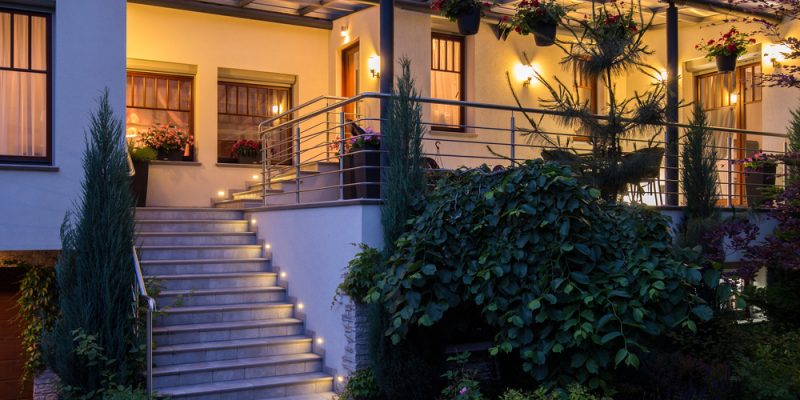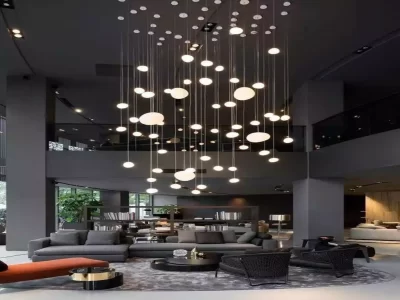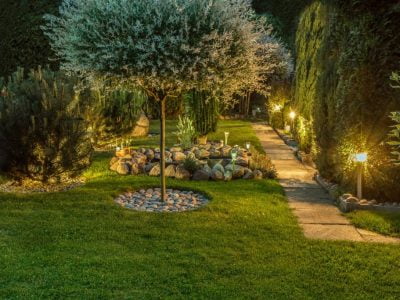A balcony and garden can be your private corner of the globe. This is where you can relax, unwind, and take in some fresh air. The right lighting can make an outdoor space look more inviting and cozy. There are plenty to choose from in lighting, whether you’re decorating an apartment or a larger space.
Explore the possibilities of different lighting types and create your unique haven. There is nothing better than sitting down with your family and friends and letting them relax because quality time is important in this busy world we live in today.
How to Plan Garden and balconies Lighting Design?
Think about where you want to place garden lighting. Lighting has many different applications. For example, to draw attention to plants or sculptures. Or to soften the garden sheds and the family trampoline, which you may not be able to ignore during the day. Limit your use of illumination. Concentrate on the key components of your garden. When lighting your landscape, you should keep these points in mind.
1. Zone Your Garden
You divide the garden into numerous zones after taking into account the various lighting options and getting the welded wire fence gate. Access pathways, major routes, and secluded areas require the most light, but they will all need different treatments to get the best results.
Wrap string lighting around your balcony railing for a long-lasting glow. An excellent approach to illuminate your outside area without leaving any traces is using string lights. Look for a wall outlet nearest your railing, especially using electrical-powered lighting. An extension cord can be used if the wall outlet is not available.
- A battery-operated light can also be a great choice if you want to save money.
- String lights can also be displayed on the wall.
- It is possible to add photos to string lights in order to make them more personalized.
- Place a single string or chunky lights behind furniture to create a minimalistic appearance.
2. Outdoor Seating
Lighting your outdoor area with lights will bring out the furniture’s beauty and create a welcoming ambiance. Garden lighting can be installed in the garden passageway. It would help if you avoided bright and flashy lights. Instead, use dim, warm, and colorful lights with a warm feel. Use up lights near the trees and shrubs as well as the boundary.
3. Decide on the type of objects you want to illuminate.
For lighting rockeries, ponds, or plants, use different types of lighting. You can also brighten up driveways or facades with another type of lighting. Light sources are best for landscape elements (trees and shrubs, water features) and where ornamental plants dominate.
One example of a unique lighting solution is the STONO IS63, stone-look luminaries. Its greatest advantage is the possibility to modify the light source to match any natural elements. Also, consider how you want to design your garden furniture or balcony furnishings.
4. Power Sources and Energy Efficiency
When selecting outdoor lighting, it is important to consider the power source. You can use inexpensive PV cells for small lighting elements, such as LED lamps. But the electrical grid is required for lamps placed on driveways and on facades. They are essential for reliable operation, and it is obvious to everyone.
Do not try to install lights by yourself!
5. Fiber-Optic Will Provide a Soft Glow
Fiber-optic light for gardens is quite new. It casts a soft ambient glow and is perfect for highlighting decking or steps. These kits are inexpensive, but you will pay more for professional installation.
How Can You Install Garden Lumining?
Garden lights work directly from the mains or via a transformer that delivers a 12 to 24 V low-voltage current.
These sets will need to be installed by an electrician. Electrician near me can help you with the setup, repair, and upkeep of intercoms, safety systems, or digital security. However, you may be able to fit the smaller low voltage sets yourself if the power supply, usually a waterproof socket equipped with an RCD (residual Current Device), has been fixed outside. Low-voltage lighting outperforms the other two.
It’s safer, has more fittings, and is easier to fit, and the fixtures can be moved around much more easily. It is very easy to work out the dimensions of the transformer you will need. Multiply the wattage, several lights (bulbs), and your desired lighting scheme.
A 120-watt transformer is required to power four 30W lamps. This will allow you to increase the light output or brightness of the bulbs in the future without replacing the transformer.
Final Words
Hopefully, these ideas will help you light up your garden and balcony so you can spend quality time with your family and friends. Look at the above suggestion and find the best-fitted options for you. If you still need any recommendations or advice, please contact us.










Comments